
The 8th Armored Division was an armored division of the United States Army that served in the European Theater of World War II.

The 10th Armored Division was an armored division of the United States Army in World War II. In the European Theater of Operations the 10th Armored Division was part of both the Twelfth United States Army Group and Sixth United States Army Group. Originally assigned to the Third United States Army under General George S. Patton, it saw action with the Seventh United States Army under General Alexander Patch near the conclusion of the war.

The 37th Armor is an armor (tank) regiment of the United States Army. It is often remembered as the successor to the 37th Tank Battalion, 4th Armored Division, commanded by then Lieutenant Colonel Creighton Abrams during World War II.

The 784th Tank Battalion, was a United States Army segregated combat independent tank battalion during World War II.
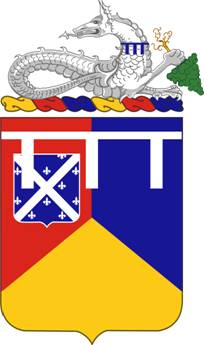
The 66th Armor Regiment is the oldest armored unit in the United States Army, tracing its lineage to the 301st Tank Battalion which served with distinction soon after it was formed in the First World War; the 301st trained at Camp Meade, Maryland, where then Cpt. Dwight D. Eisenhower was an instructor. It has often been rumored that the 301st, the parent unit of the 66th, was first commanded by Col. George S. Patton, but this appears not to have been the case; while Patton was the first officer assigned to the Tank Corps, and while the 301st Tank Battalion was the first unit formed, Patton went nearly immediately to France to train Americans attached to Allied commands. The 301st was the only American heavy tank battalion to have seen action in the war. After the war, the 301st transitioned in the Regular Army to become the 66th Infantry Regiment by way of the 16th Tank Battalion.
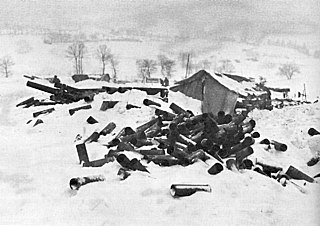
The Battle of Elsenborn Ridge refers to the northernmost German attacks during the Battle of the Bulge. The area from Elsenborn Ridge itself to Monschau was the only sector of the American front line attacked during the Battle of the Bulge in which the Germans failed to advance. The battle centred on the boomerang-shaped Elsenborn Ridge east of Elsenborn, Belgium. In this region, Elsenborn Ridge marks the westernmost ridge of the Ardennes, rising more than 2,000 feet (600 m) above sea level; unlike the uplands further north, east and south, it has been extensively logged. West of Elsenborn Ridge, where the land descends in gentle hills to the cities of Liège and Spa, was a network of Allied supply bases and a well-developed road network. The Germans planned on using two key routes through the area to seize Antwerp and force a separate peace with the United States and Britain. Capturing Monschau, the nearby village of Höfen, and the twin villages of Rocherath-Krinkelt just east of Elsenborn Ridge, were key to the success of the German plans, and Hitler committed his best armored units to the area.

The tank destroyer battalion was a type of military unit used by the United States Army during World War II. The unit was organized in one of two different forms—a towed battalion equipped with anti-tank guns, or a mechanized battalion equipped with armored self-propelled guns. The tank destroyer units were formed in response to the German use of massed formations of armored vehicles units early in WWII. The tank destroyer concept envisioned the battalions acting as independent units that would respond at high speed to large enemy tank attacks. In this role, they would be attached in groups or brigades to corps or armies. In practice, they were usually individually attached to infantry divisions. Over one hundred battalions were formed, of which more than half saw combat service. The force was disbanded shortly after the end of the war when the concept had been shown to be militarily unsound.
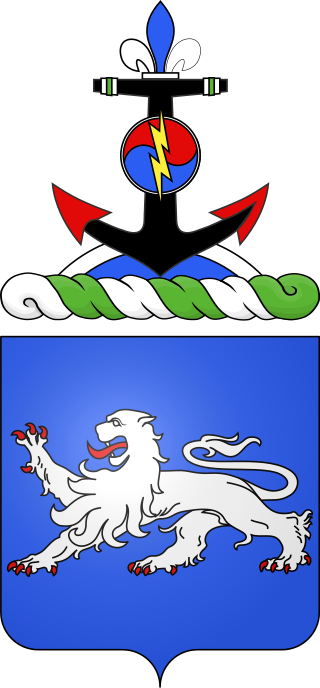
The 68th Armor Regiment is an armored regiment of the United States Army. It was first activated in 1933 in the Regular Army as the 68th Infantry Regiment.
The 70th Armor Regiment is an armored (tank) unit of the United States Army. It was constituted as the 70th Tank Battalion in July 1940, an independent tank battalion intended to provide close support to infantry units. In this role, it saw action in the Mediterranean and European Theater of Operations, making assault landings and fighting with the 9th Infantry Division in North Africa, and with the 1st Infantry Division in Sicily. The battalion supported the 4th Infantry Division on Utah Beach during the D-Day landings in France, and fought with the 4th Infantry Division through the remainder of World War II. The 70th Tank Battalion was one of the first three tank battalions to deploy to Korea in the Korean War, where it saw significant action, primarily with the 1st Cavalry Division.
The 607th Tank Destroyer Battalion was a tank destroyer battalion of the United States Army active during the Second World War. They arrived in England during April, 1944, and entered combat in mid June, landing at Utah Beach. The unit fought across France and into Germany during the summer and early winter of 1944. In late winter, they were then pulled out and sent to Belgium near the end of the Ardennes Campaign and again fought their way into and across Germany, ending the war near the Czechoslovakian border. The 607th received credit for the Normandy, Northern France, Rhineland, Ardennes-Alsace and Central Europe campaigns.
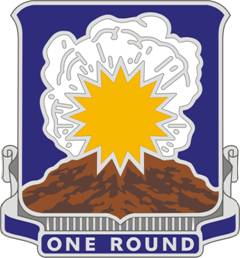
The 705th Tank Destroyer Battalion was a tank destroyer battalion of the United States Army active during the Second World War. It was originally formed from artillery elements of the 5th Armored Division, and its lineage is today perpetuated by the 75th Cavalry Regiment.
The 612th Tank Destroyer Battalion was a unit of the United States Army during World War II. It played an instrumental role in defending Hofen during the Battle of the Bulge. The specialized tank destroyer unit was attached to various organizations during the war. In December, 1944, the twelve 3-inch guns of Company A were integrated into the defensive positions of the 395th Infantry Regiment and were key to keeping the attacking Sixth Panzer Army from gaining essential objectives in the first days of the offensive.

This is the Juno Beach order of battle on D-Day.

The 743rd Tank Battalion was an independent tank battalion that participated in the European Theater of Operations with the United States Army in World War II. It was one of five tank battalions which landed in Normandy on D-Day. The battalion participated in combat operations throughout northern Europe until V-E Day. It was inactivated on 27 November 1945.
The 745th Tank Battalion was an independent tank battalion that participated in the European Theater of Operations (ETO) with the United States Army in World War II. It was one of five tank battalions that landed in Normandy on D-Day. The battalion participated in combat operations throughout northern Europe until V-E Day. Unlike many independent tank battalions, which were attached to different units over time, the 745th was attached to the 1st Infantry Division for the duration of its combat operations in the ETO. It was inactivated in October 1945.

The 747th Tank Battalion was an independent tank battalion that participated in the European Theater of Operations with the United States Army in World War II. It was credited with an assault landing at Normandy, landing the morning after the initial D-Day landings (D+1). The battalion participated in combat operations throughout northern Europe until V-E Day, primarily attached to the 29th Infantry Division. After the war it was briefly engaged in occupation duties. Redesignated the 747th Amphibian Tank Battalion on 10 July 1945, it was inactivated in March 1946.
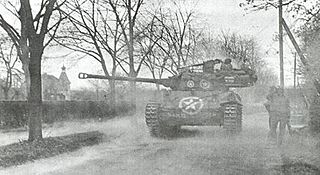
The 824th Tank Destroyer Battalion was a tank destroyer battalion of the United States Army active during the Second World War. It saw service during 1944–45 in the European Theater of Operations, primarily attached to the 100th Infantry Division in an infantry support role. After fighting through France and southern Germany, the battalion ended the war in Austria.
The 746th Tank Battalion was an independent tank battalion that participated in the European Theater of Operations with the United States Army in World War II. It was one of five tank battalions which landed in Normandy on D-Day. The battalion participated in combat operations throughout northern Europe until V-E Day. It served primarily as an attachment to the 9th Infantry Division, but fought alongside numerous other units as well. It was inactivated in October 1945.
The 735th Tank Battalion was an independent tank battalion that participated in the European Theater of Operations with the United States Army in World War II. The battalion entered combat in Normandy in July 1944 with the 5th Infantry Division and fought across France with the 95th Infantry Division. When reattached to the 5th Infantry Division, the 735th Tank Battalion played a key role in the reduction of the fortifications of Metz. The battalion was also attached to the 26th Infantry Division during the Battle of the Bulge and fought the last several months of the war attached to the 87th Infantry Division. It was inactivated in October 1945.

Separate tank battalions were military formations used by the United States Army during World War II, especially in the European Theater of Operations. These battalions were temporarily attached to infantry, armored, or airborne divisions according to need, though at least one battalion spent the entire war in Europe attached to one division. They were also known as general headquarters ("GHQ") tank battalions.


















